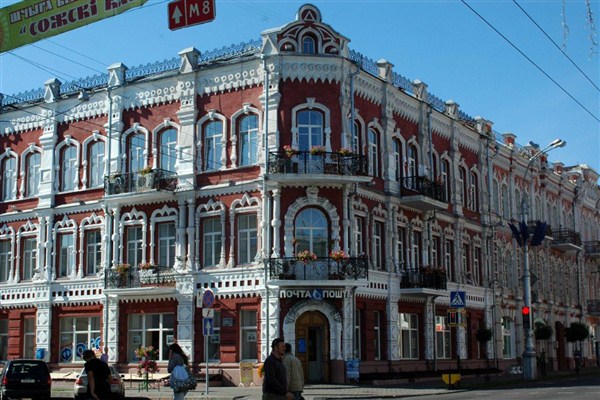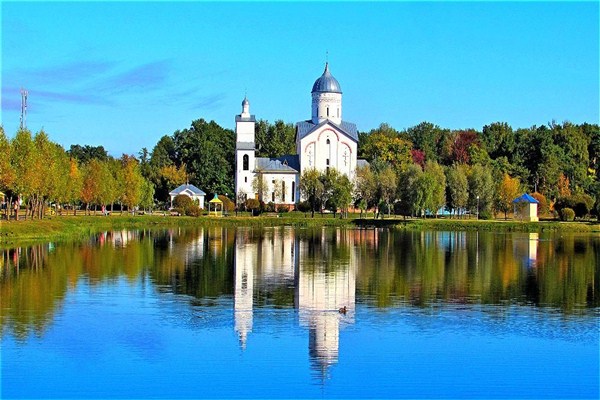The city above Sozh is the annalistic capital of the legendary ancient Slavic tribe of Radimichs.
In prehistoric times, the sea was bustling in Gomel's place. Centuries later, impassable forests towered, where lynxes were abundant. It is no coincidence that the graceful predator decorated the city's coat of arms.
1. IN THE MIDDLE OF A NOISY BALL
Once Catherine II presented her favorite General Field Marshal Peter Rumyantsev for her outstanding victories in the war with Turkey, the Gomiy Manor. The construction of the palace began in 1777 with the light hand of the hero - on the site of the old castle of the magnates of Chartorisky. Now with the Palace of Rumyantsevs-Paskeviches, a unique architectural monument of the end of the XVIII - beginning of the XIX century, it is impossible to miss in Gomel. All streets and roads lead to it, it is the heart of the city.
Today the palace is a unique museum complex. The magnificent interiors of the century before last are recreated here and collections of rarities are collected.
Also, there are often held secular balls here. So bring your ball gown or tuxedo with you.

2. IS IN THE COUNT'S PARK...
The ancient park of the Rumyantsev Palace is one of the oldest in Europe. Exotic plants were brought to Gomel from different parts of the country. And now Siberian fir, Manchurian nut, ash-tree maple and other representatives of flora, which are not typical for our latitudes, neighbor here. Two two hundred year old oaks have survived.
A special place in the park is the Lefty Pond. Dozens of pairs of black and white swans slide along the water surface - a fascinating sight. But if birds don't pay attention to the guests, then numerous squirrels are ready to be friends. It is enough to rustle with a bag of seeds or nuts, as the animals immediately materialize at your hands.

3. LOVE FORMULA
In the Gomel branch of the Vetkovsky Museum of Folk Art you can learn everything about Old Belief in the context of the Belarusian traditions. The rare exhibit is the Gospel of the 16th century from Kositskaya Sloboda. The folio is decorated with ornamented multicolored headpieces and braided letters.
There are rare copper and silver icons in the exposition. They were worn as protective amulets, which were officially banned in the XVIII century. Old Believers continued the ancient art craft, some of whom settled here. Cast icons were called "traveling icons" in the olden days and took with them on their way.
In Gomel you can learn to "read" ornaments. Each embroidered towel-rushniki has a special meaning. They served as a protection against trouble, a helper in good deeds and a guarantor of well-being. In the museum you can sit behind a loom and weave ornaments, personal code "for good luck", "long life" or "mutual love".

4. IN A HOUSE WITH A CARVED PALISADE
Gomel preserved ancient wooden houses in the center - samples of the Belarusian architectural tradition. The houses are residential. The most interesting are located in the streets of Karl Marx, Paris Commune, Arteme and Pushkin lane. Their peculiarity is in carved patterns. They want to make a museum quarter in the open air.

5. FROM THUNDERBOLT TO SCARP
The aircraft designer Pavel Sukhoi lived and studied here and even taught for several years before he left for Moscow. It was here that he saw for the first time an airplane of the famous Russian pilot Sergey Utochkin and "fell ill" with the sky. The museum exposition at the Gomel State Technical University named after Sukhoi is open for guests.
Andrei Gromyko, the USSR Minister of Foreign Affairs, the legendary Mr. No, is also a native of Gomel. In one of the halls of the Rumyantsev Palace there is an exposition dedicated to it.
There is also a museum of the famous psychologist Lev Vygotsky. It was in Gomel that he created his famous laboratory of psychoanalysis.
The star of world tennis Maria Sharapova is also from here. Her grandmother lives in one of the multi-storey buildings along Rechitsa Avenue, next to the stadium, where her father introduced her to this sport.




